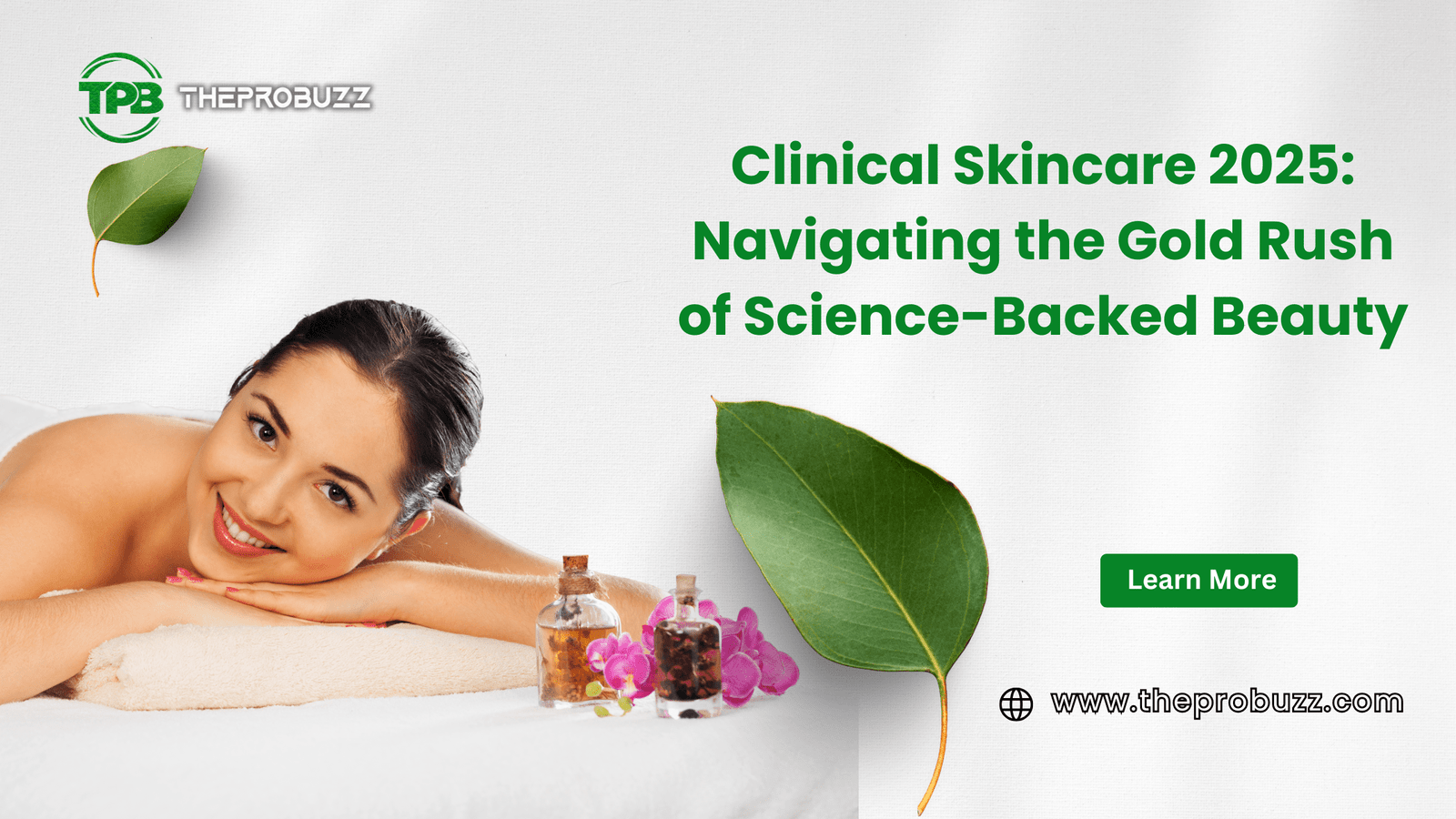The beauty landscape in 2025 is seeing a dramatic shift. No longer are people turning to glossy ads or influencer buzz. Today, it’s all about clinical skincare, products, and regimens that are science-formulated, dermatologist-recommended, and results-focused.
With increased consciousness about ingredients, skin types, and cutting-edge technologies, skincare enthusiasts are turning to solutions that provide tangible benefits instead of mere temporary results. Here, we outline the most salient trends in clinical skincare for 2025, groundbreaking products, technologies, and professional opinions that are rewriting the rules of beauty.
1. The Rise of Clinical Skincare: Why Science Matters
Unlike traditional cosmetics that primarily focus on appearance, clinical skincare emphasizes effectiveness and safety. In 2025, consumers will be better informed and actively seek solutions backed by evidence. The key attributes are:
- Clinical Trials & Studies: Firms are publishing trials and research data to support their products.
- Dermatologist Involvement: Products developed by dermatologists include guarantees of safety and efficacy.
- Transparency: Full disclosure of ingredients and their effect is now a significant buying consideration.
This revolution is a gold rush for consumers and brands alike, as products present actual enhancements rather than fictions of beauty.
2. Breakthrough Ingredients Driving 2025 Skincare
a) NAD+ for Cellular Rejuvenation
NAD+ (Nicotinamide Adenine Dinucleotide) is now being added to creams and serums to help cells renew themselves. Its main job is to get skin cells to make as much energy as possible so that they glow and stop aging from the outside.
b) Peptides & Growth Factors
To get rid of fine lines and make skin more elastic, upper-level peptides and growth factors are used to start collagen production and repair tissue. Dermatologist-recommended serums have bioactive ingredients more often.
c) Exosomes & Stem Cell Technology
Exosome-based products utilize cell-to-cell communication to enhance skin repair. Stem cell-derived actives repair compromised skin with minimal irritation.
d) Adaptogens for Skin Stress Relief
Ashwagandha, ginseng, and reishi mushrooms are among some of the new additions that are being used more to tackle environmental and oxidative stress, calming irritated or sensitive skin.
3. Skincare Devices Integrating Technology
a) LED Therapy Masks
It employs certain wavelengths of light to attack acne, pigmentation, and aging. Clients enjoy similar results from in-clinic treatments but from the comfort of home.
b) Microcurrent Devices
Microcurrent devices stimulate facial muscles, enhancing skin firmness and tone and lowering sagging.
c) At-Home Laser & Ultrasound Devices
Miniature technology innovations enable professional-strength treatments for pigmentation, wrinkles, and collagen induction at home.
4. Trending Product Categories in Clinical Skincare
- Clinical Serums –Intensive treatments for skin that is getting older, has too much pigment, or is dull.
- NAD+ Creams – Moisturizers that help skin cells heal and make skin look brighter.
- Biotech-infused Moisturizers – Combining peptides, stem cell technology, and adaptogens for the best results.
- Customizable Skincare Kits – Skin analysis apps and AI-diagnosed routines that are tailored to your needs.
5. Personalized Skincare: AI & Diagnostics
Artificial intelligence-based mobile applications and online tests now enable users to personalize skincare regimens according to:
- Skin type and sensitivity
- Environmental exposure
- Age and lifestyle factors
Brands are using machine learning to forecast product efficacy and tailor routine suggestions, opening up personalized clinical skincare to more consumers.
6. Dermatologist-Approved Routines
A typical clinical skincare routine in 2025 might include:
- A gentle cleanser that is backed by science
- A specific serum that has peptides, NAD+, or antioxidants in it
- Biotech ingredients in a moisturizer
- Sunscreen with a broad spectrum and SPF of 30 or higher
Experts preach consistency and minimalism, which is similar to the skinimalism philosophy but focuses on ingredients that have been proven to work in clinical settings.
7. Unique Points & Innovations
- Waterless Formulations: Cutting water consumption while enhancing ingredient strength.
- Multi-Functional Products: Merging moisturizer, SPF, and serum into one to simplify regimens.
- Eco-Friendly Packaging: Eco-friendly packaging now meets consumer demands for clinical openness.
- Gut-Skin Axis: Probiotic skin care aimed at microbiome balance for better skin.
- Blue Light Protection: Adding antioxidants to shield from digital screen exposure.
8. How to Choose Clinical Skincare Products
- Check for Clinical Validation: Look for peer-reviewed studies or dermatologist trials.
- Evaluate Ingredient Transparency: List active ingredients along with concentrations.
- Read Expert Reviews: Rely on sources that carry dermatologist or skincare professional recommendations.
- Test for Skin Sensitivity: Patch-test new products at all times to prevent adverse reactions.
9. Challenges in Clinical Skincare
- Science-Washing: Marketing language can overstate scientific assertions.
- Cost Factor: Top-of-the-line ingredients and technology are expensive.
- Accessibility: Not everything is universally accessible.
- Consumers need to stay perceptive, focusing on proven science-backed items, not hype.
Conclusion
In 2025, when science, technology, and openness come together, it will be a big year for clinical skincare. AI-driven routines, NAD+ creams, peptide serums, and biotech devices are just some of the things people can now buy that will really help their skin.
Are you ready to take better care of your skin? Go to TheProBuzz.com to see our edited clinical skincare products and learn how to get healthy, glowing skin right now!

